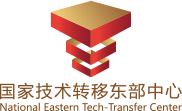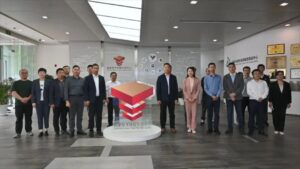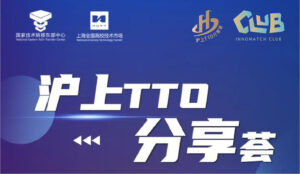East China Normal University is directly affiliated with the Ministry of Education and is ranked in the "211 Project" and "985 Project". The university has 27 full-time colleges, 3 academic departments, 1 Marxist college, 2 academies, 1 management college, and 8 physical graduate schools, offering 80 undergraduate majors.
The university has 2 national key laboratories, 1 national engineering technology research center, 1 national field scientific observation research station, 1 national international joint research center, 7 key laboratories and engineering centers of the Ministry of Education, 1 joint laboratory for international cooperation of the Ministry of Education, 10 key laboratories and engineering centers of Shanghai, 1 soft science research base of the Ministry of Education and 1 Shanghai soft science research base of the Ministry of Education's higher schools. The university has 6 key research bases in humanities and social sciences under the Ministry of Education, 10 innovation research bases in philosophy and social sciences in Shanghai, a decision-making and consulting research base studio of the Shanghai Municipal People's Government, and 2 university think tanks in Shanghai.
1. Flexible electronic skin
Electronic skin is made by plating silver on PI film which is similar to the flexibility of human skin to sense changes in external temperature, humidity and pressure. In temperature sensing, the resistance of Ag coated on the PI film changes with temperature and the temperature is detected. For humidity sensing, it detects humidity by forming a capacitance by parallel distribution of silver on the PI film. For pressure sensing, a flexible piezoresistive material made of graphite powder doped with PDMS, which has good compatibility with PI, is coated on PI film to produce a pressure sensor.
Technical innovation: in the flexible polyimide film by covering different shapes of silver to produce temperature, humidity, pressure and other sensors, so that the traditional hard sensor device into a flexible device, wearable, can sense the environmental temperature, humidity, pressure, etc., so that you can collect the sensory data of human skin. This flexible electronic skin can also replace the human skin will be relevant tactile information collected and transmitted back to the control side, it will be combined with the robotic arm can also make the robotic arm and human arm action is similar to the difference.
2. Development and application of seed-farming model based on ultrafine bubble technology.
1. Ultra-fine bubble technology
Ultra-fine bubble technology usually refers to the use of physics principles, the gas in the form of ultra-fine bubbles injected into the water body. The bubbles produced by this technology are generally less than 50μm in particle size, where 1~50μm bubbles are called micro-bubbles and bubbles less than 1μm are called nano-bubbles. Compared with ordinary bubbles, ultrafine bubbles have large specific surface area, high surface energy, good suspension stability, strong permeability and other characteristics, can be widely used in agriculture, forestry and fisheries, environmental protection, energy, medicine, food, building materials and other fields.
2. Aquaculture models based on microbubble technology
Technical features: ultrafine bubbles fast, efficient, durable oxygenation effect, significant temperature effect, can promote biological blood flow, enhance metabolism, promote the growth and development of shrimp, crab, etc., significantly shorten the breeding cycle; high surface energy and charged ultrafine bubbles, shrinkage pressure burst when the resulting high temperature and high pressure microenvironment, can kill the water body is adsorbed bacteria, viruses, which is a completely green physical sterilization process. It can significantly improve the quality of aquatic products. The mode of aquaculture aquaculture, can increase the yield of 20% or more, the quality of aquatic products have significantly improved.
3. Cultivation models based on microbubble technology
Technical features: ultrafine bubble water lasting oxygen-rich effect, high permeability, can significantly improve crop root redox status, promote root growth and maintain high vitality (Figure 5), improve the efficiency of root nutrient absorption, delay leaf senescence, enhance leaf photosynthesis ability; ultrafine bubble molecular orientation, can significantly reduce the surface tension of water, slow water evaporation rate, increase soil pore water Keep the amount available to promote crop growth.
This mode of rice cultivation can increase the yield by more than 10%, save water by more than 30%, save fertilizer by more than 20%, and improve the quality of rice significantly.
3. MEMS bioinformatics detection device based on non-diagonal giant magnetic impedance sensor
This project develops a bioinformatic detection device based on micromechanical non-diagonal giant magnetic impedance effect (GMI) technology. The non-diagonal GMI-based magnetic field sensor is fabricated using a micromechanical process to make it as small as a few tens of micrometers in size. At the same time, the resolution of the sensor is up to 300 pT (the geomagnetic field is about 50 million pT). The specific detection method is to combine organic polymers with inorganic nanoscale magnetic microspheres by biological method to form a magnetic microsphere with certain magnetic properties and special structure. These magnetic microspheres can be connected to antibodies, which in turn can be connected to the corresponding biological target through immune reaction, thus establishing a correspondence between the magnetic microspheres and the target. In this way, a micromechanical, non-diagonal giant magnetic impedance sensor can be used to measure the weak magnetic field changes caused by the microspheres, which can be used to confirm the presence and number of magnetic microspheres and characterize the presence and number of biological targets to be tested. The bioinformatic measurement device developed using this method can achieve rapid detection of biological targets while maintaining accuracy, and also miniaturize the device to make it portable.
Priority use of industrial areas and local regions.
1) Food Safety Testing.
2) Cancer marker testing.
3) Environmental monitoring.
(4) Portable biomolecular detection equipment.
5) Rapid Biomolecular Testing.
Preliminary intention to deal with the way and amount: our university has completed the principle prototype. We need a clear industry demand, testing and verification environment, and sales promotion from the partner company.
The distribution of benefits can be in the form of instrument operation authorization, agency, or even equity cooperation, etc., which can be agreed upon depending on the specific circumstances such as the input of both parties, the market scale, and the ability of the partners.
4、Nano composite coating technology for water pump energy saving
This technology uses liquid phase ultrasonic exfoliation method to prepare flake nanomaterials, including flake nano-molybdenum disulfide, tungsten disulfide, boron nitride, graphene, etc. This method has the advantages of low production cost, high efficiency and easy scale-up production, and the prepared flake nano-materials are easily filled into resin materials to form high-performance nanocomposites. The composite material is applied to the modification and repair of pumps, which can significantly improve the efficiency of pumps and reduce energy consumption.
Prioritize the use of industrial sectors and local areas: power, chemical, urban water supply and drainage, etc.
5. In-situ control technology for a new type of pollutant in landfills
The technology is designed for the new pollutants produced in the landfill process, and the antibiotic and resistance gene removal rate can be optimized by in situ re-filling of leachate to the landfill bioreactor and controlling the load and other parameters of the re-filled leachate. Using the technical method of the present invention can realize the in situ in situ treatment of antibiotics and resistance genes in the leachate with high efficiency and low consumption, and the removal rate of major antibiotics and resistance genes in the leachate can reach about 80% or above.
Preferred use in industrial and local areas: suitable for environmental protection, especially for the treatment of new pollutants such as antibiotics and resistance genes, such as pharmaceutical wastewater, livestock and poultry wastewater, sludge and waste leachate.
Preliminary intention to trade methods and amounts: cooperation units have market and project needs, have some practical experience in environmental protection water treatment engineering. Patent transfer, or technology to continue in-depth cooperation in development.
Contact details
Contact:021-55230656
E-mail: info@gaoxiaotech.com
Website address: www.gaoxiaotech.com




